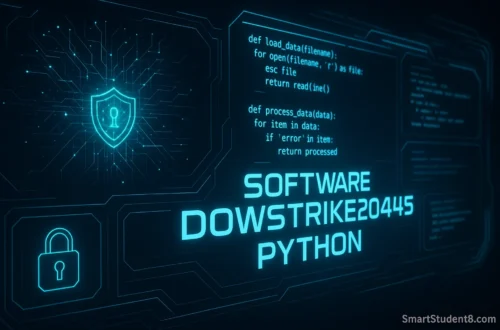The phrase “thejavasea.me leaked aio – tlp” may have been heard in social media groups or online forums, and you might be wondering what it means. Does it mean anything to you, or is this just technical jargon? It is a major event in cybersecurity. It highlights the ongoing battle between those who protect data and those that seek to exploit it.
This case involves a website, a classification system of sensitive information and the consequences that can occur when this information is in the wrong hands. Anyone who uses the Internet, from casual users to business owners, should be aware of this incident, as it is a reminder of our digital vulnerability.
In the years I have spent working in and around digital security, I have seen countless data breaches. The stories are different, but they all share the same elements: a security lapse, a motivated hacker, and valuable data. This modern drama is best illustrated by thejavasea.me, and the AIO TLP leaks. This article will break down this complicated topic in pieces.
We will explore the Javasea.me origins, demystify “AIO-TLP”, analyze the serious consequences of these leaks to individuals and businesses and, most importantly provide you with practical steps to protect yourself. It’s not just about one site; it’s also about learning to navigate the data leak ecosystem safely.
What is Thejavasea.me all about? What is Thejavasea.me?
We must first understand the source before we can fully comprehend the leak. Thejavasea.me carved a niche for itself in the darkest corners of the Internet. It was a forum for hackers, researchers in cybersecurity, and people who wanted to obtain data not meant for the public.
Some users may be using these platforms to test their security (white-hat hackers), while others might have malicious intentions, such as finding databases with stolen passwords and proprietary software. Thejavasea.me is known for hosting and disseminating large amounts of leaked information, which has made it a popular resource for those who are in the know.
Sites like this may contain anything from data scraped from public websites, to highly sensitive personal and corporate information obtained illegally. Imagine it as an online marketplace of information. Users may share “combo-lists” (a collection of usernames, passwords, and internal documents) or software that could be used for cyberattacks. As the platform became known as a hub for such activities, its importance grew.
This was not just a random site; it was a community that was organized and where information was exchanged. The risk to data privacy was therefore concentrated. Such forums are difficult to shut down because of the anonymity they provide. This allows illegal activities to flourish outside the reach conventional law enforcement.
The AIO-TLP acronym is more than just an acronym
Let’s now look at the second part of this phrase: “AIO TLP.” This is not a random set of letters. It’s an important concept in cybersecurity that lets you know how sensitive information is. Let’s break this down.
- The acronym for “All-In One” is. It refers to data in a bundle or package. An AIO leak is not a single document or small piece of data, but a collection of files and information. A database, an entire set of internal emails of a business, or a file containing thousands user credentials could all be bundled into a convenient and dangerous package.
- The acronym for the “Traffic Light Protocol” is. It is a standard system that security professionals and other organizations use to classify data based on the sensitivity of it and how they should be shared. This protocol uses four different colors to indicate the audience of a data piece.
-
- TLP RED: This information is restricted to participants in a conversation or meeting. This information cannot be shared with anyone else. Consider it information that is only for you.
- AMBER: These information may be shared with other members of the organization, but only if they have a legitimate need to know. This information is meant to protect a company, but it’s too sensitive to release publicly.
- GREEN TLP: These data can be shared to a larger community, including other companies in the same industry and trusted partner organizations. It is expected that the data will be shared in a responsible manner.
- TLP WHITE: These information are free to distribute.
If you see the term “AIO-TLP leaked” it means large packages of data that are often classified as AMBER, or even RED. It’s the cyber equivalent of posting blueprints for a bank vault online. This is not a simple leak, but rather a leak of highly confidential information that could be damaging to the organization if it were exposed.
The Javasea.me leaks: Anatomy
Thejavasea.me incident was likely not one single event, but a series where data marked with TLP classifications posted to the forum. How does this kind of thing happen? Human error, technical flaws, and targeted attacks are usually the root causes. A hacker could gain access to corporate networks by tricking employees into divulging their login credentials.
Once the hacker is inside the network, he can search for sensitive databases and document stores to exfiltrate data. I remember a case in which a former employee who had access credentials lingering decided to leak an entire trove of R&D internal documents. This caused immense damage to the previous employer.
Unpatched software vulnerabilities are another common vector. An attacker could exploit a security flaw in a web-based application used by a company to gain access to its server and data. Platforms like thejavasea.me are a great way to share or sell stolen data. These platforms provide infrastructure and an audience for the stolen data.
The “AIO TLP” files on the website likely contained a mixture of data including personally identifiable information (PII), such as names and addresses, financial records and corporate trade secrets. They also probably contained user credentials for various online services. The mere presence of TLP labeled data outside of its intended environment indicated a serious breach of security and trust.
What is the real-world impact of these leaks?
It is easy to dismiss the impact of a data breach that occurs on a niche site as something that only impacts large corporations or technology experts. The ripple effects from such leaks are felt by almost everyone. Information released by these AIO packages can be a powerful weapon for cybercriminals.
Individuals face immediate and personal risks. Criminals can “credential stuff” websites using automated software if your email address and password for a service that you used in the past are included in a leak. They could gain access to your email, social media or banking accounts.
Such a breach could have devastating consequences:
- ID Theft: A criminal with enough personal information can open credit card accounts in your name, submit fraudulent tax returns or take out loans.
- Financial Fraud: Direct Access to Your Financial Accounts can Lead to Your Savings Being Drained in Minutes.
- Scams and Phishing: If you leak your email address or name, it will be included in lists for targeted phishing campaign. This makes you more vulnerable to convincing scams.
The fallout for businesses is as serious, if it’s not worse. Leakage of internal documents could give competitors an unfair advantage by exposing trade secrets. Data leaks can cause a loss of trust that will take years to repair and financial penalties under regulations such as GDPR and CCPA. Leaked technical information such as source codes or network configurations can also provide a road map for future attacks.
Cybersecurity tips that you can use as your first line of defense
Do you feel a bit overwhelmed? This is a common reaction. You are not helpless. You can’t prevent every corporate data breach, but you can create strong digital walls to protect your life. I tell people to concentrate on the things they can control. By adopting some key security habits, you can reduce your risk.
Start with your passwords. It is important to start with your passwords. Never use simple passwords that are easy to guess, and don’t reuse the same password on multiple websites. It’s difficult to remember multiple complex passwords. That’s why a password manager comes in handy. They generate strong, unique passwords and store them for all of your accounts. You only have to remember one master password. This is a game changer for personal security.
Activate two-factor or multi-factor verification (MFA), if available, wherever they are offered. This will add a layer of protection beyond your password. Even if your password is leaked, a criminal will not be able log in without the 2nd factor. This is typically a code generated by an app or sent to your phone. This small inconvenience provides a big security boost.
The Tech-Savvy: Advanced Protection for Businesses and the Tech-Savvy
You can do more if you are a small-business owner or want to improve your security. Audit your digital footprint regularly. What accounts have you created that you no long use? Close them. What information is available about you online? Try to minimize the information that is publicly available. Businesses should regularly conduct security audits on their own systems and networks, to identify vulnerabilities before an attacker does.
Another important component is employee training. Employees are the first line, but can be the weakest link. Regular training in how to identify phishing emails and the importance of using strong passwords can help prevent many breaches from occurring. A plan for incident response is also essential. Do not wait until a breach occurs to decide what to do. You should know who to call, how to limit the damage and how to inform affected parties. An organized and swift response can reduce the impact of an incident.
Data leaks: The Future and the broader Landscape
Thejavasea.me’s story is not an isolated one. This is a symptom for a larger and ongoing battle in the age of digital technology. There is a high demand for data leaks, whether it’s for criminal activities, corporate espionage or state-sponsored activity. Platforms will continue to emerge as long as there is a demand for leaked data. The law enforcement agencies and cybersecurity companies are constantly playing cat and mouse with these operators, who use anonymizing technology and host their servers on jurisdictions that have lax regulation.
We can expect that this trend will continue in the future, but methods will change. Artificial intelligence and machine-learning advances may provide new tools to detect and prevent leaks, but attackers can also use them to create more sophisticated attack. Our best strategy as individuals and organisations is to be vigilant and proactive. The principles of good cybersecurity–strong passwords, multi-factor authentication, regular updates, and a healthy dose of skepticism–will remain our most effective defenses against the threats posed by data leaks.
Final Thoughts – Building a Security Culture
The story of the “thejavasea.me leaked aio – tlp” goes beyond a technical account about a data breach. This is a lesson on digital responsibility, and how fragile privacy can be in a world that’s increasingly interconnected. This underscores how important it is to treat our personal data and professional data like the valuable assets they are.
We can navigate the digital world with more confidence if we understand the threats, and take concrete steps to protect us. Do not wait for your data to appear in the next AIO leaked. Build your defenses now and create a security culture in your workplace and home. This is a constant effort, but one of the best investments you can make for your digital wellbeing.





